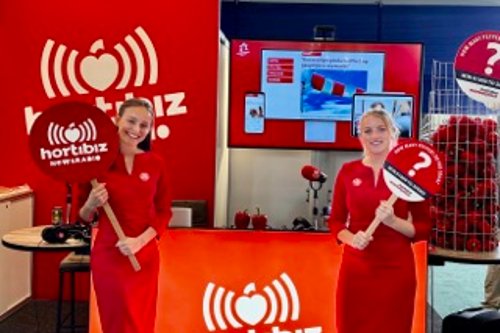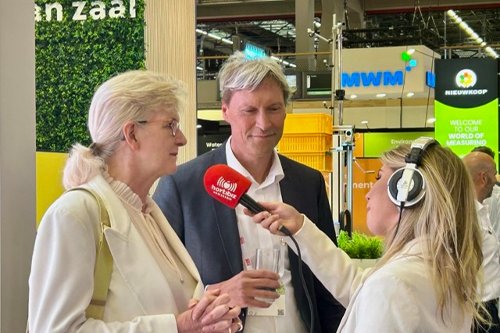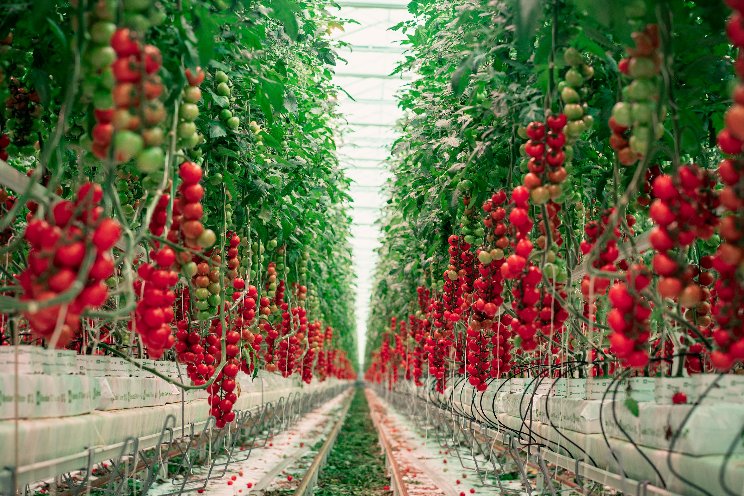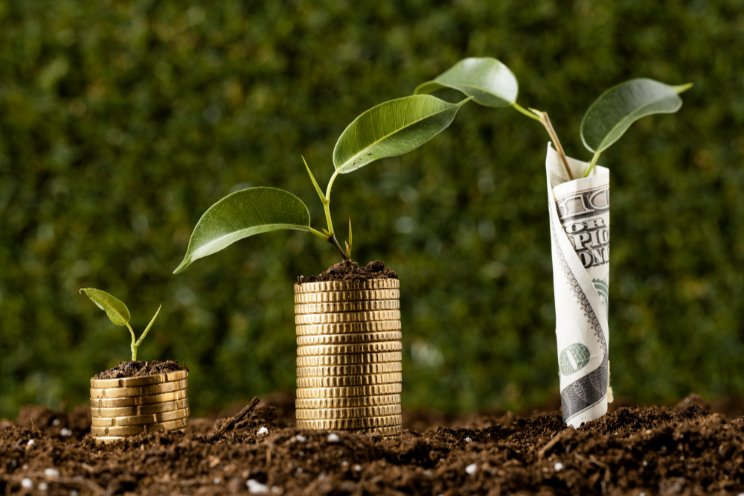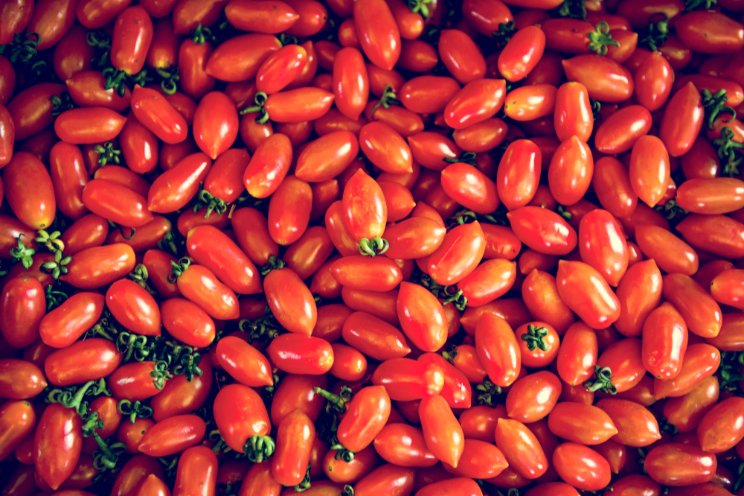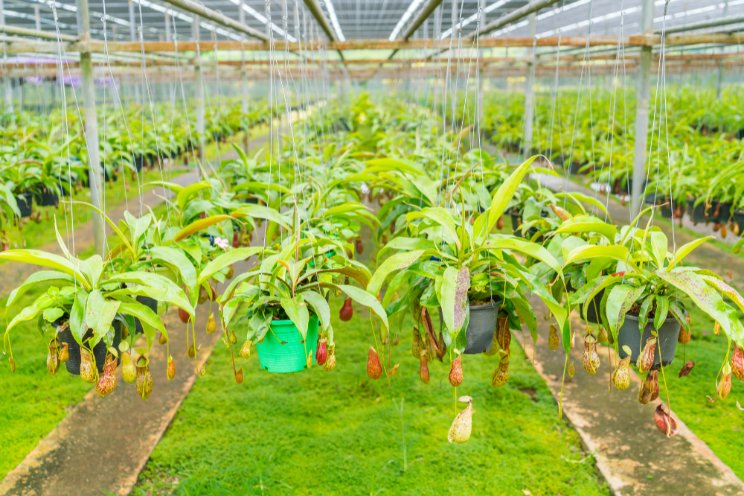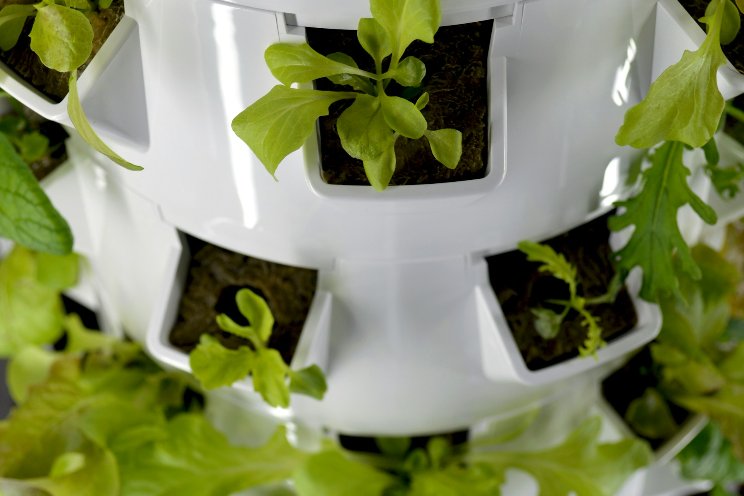Joined up thinking: food & energy grids
Added on 01 April 2021
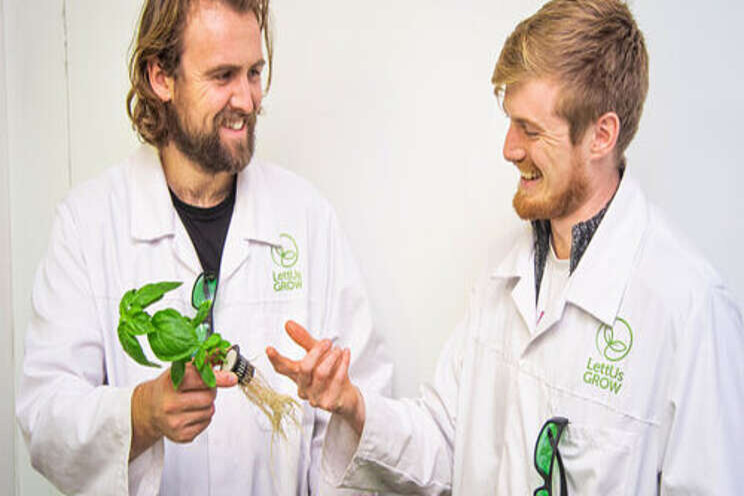
Food is our fundamental energy source as individuals - it powers everything that we do in our daily lives. For almost all food types, the energy used to produce it is derived from the sun (ok, mushroom-heads may argue against this, but they are still feeding on organic matter). Because of this simple concept, our food and energy systems are intrinsically intertwined. Bizarrely though, this fact is often overlooked in the food supply chain, from producers, all the way through the distribution and cold chain, right up to ourselves, the end consumers. Our current food system separates out different energy types. Heat, electricity, fuel and light often end up as mere balance sheet inputs to the production of food and many energy inputs don't get recorded at all.
This simplified way of thinking leads to us cutting corners for the sake of cost and not considering the absolute energy impact of our food production. There are no individuals at fault here, our economic system has lined us up to think in a linear fashion for the past few centuries and this has muddied the long-held practices of stewardship for the land. Effectively, our understanding of what we give and take from nature and the sun to produce our food is no longer in balance.
If we look at the inputs and flows of energy that make up global food production, we see many areas that we may not consider when we buy food products in our local supermarket or greengrocers. Berners-Lee et al (2018) produced a high-level analysis of the global energy flows in food production, shown in Figure 1, ultimately showing that we grow enough calories to feed everyone on our planet, but we do not use or distribute them efficiently.

Figure SEQ Figure \* ARABIC 1 - The flows of global food energy (kcal/person/day) from the amount grown to the amount eaten. For crops fed to animals, the units are based on global human population, not animal population. The left-hand bar divides the crops grown into those that are directly edible by humans and the grass, pasture & stover that is only edible by animals. The right-hand bar divides the nutrients eaten into that required for healthy human living and net excess consumption. Animal losses include all the losses inherent in animal husbandry, such as energy used for respiration, growth, movement and reproduction and the wastage of animal parts not used as food. DOI: https://doi.org/10.1525/elementa.310.f1
When you consider the journey of a simple soil-grown lettuce, you must consider the following energy inputs and flows as a minimum:
- Preparation - soil, seed production, transportation of seeds, drying and storage of seeds, farming infrastructure, fertiliser/pesticide production
- Growing - the sun, soil, fertiliser/pesticide application and waste, machinery, human labour, energy use if in a greenhouse/vertical farm
- Harvesting and storage - farm machinery, fuel, refrigeration and spoilage
- Processing and packaging - transforming raw materials into products
- Transportation - cold chain refrigeration, freight by lorry, boat or long haul air travel
- Consumption - home energy usage including storage and cooking
- Waste - throughout the chain and in the home
Through each of these processes, we are either adding energy to our food on its journey to our plates or we're losing energy through losses along the way. This is why the impact of wasting food in the home is so severe, as we are not only wasting the energy that went into producing the food, but we are also wasting the energy that was used in the supply chain along the way too. Each of these losses, even if they seem small at each stage, add up. Taking Berners-Lee's analysis and comparing this to electrical energy usage, the average food wasted per person is equivalent to all 7.8 billion people on our planet leaving a reasonably-sized LED TV (64W) on for 24 hours a day, 365 days a year.
Ever more work is being done in the field of lifecycle analyses to understand and bring to light the impact of our foods. These individual losses need to be understood, quantified and then reduced in our vision of a more efficient combined food and energy system.
There is a clear comparison that can be made between our current food systems and the journey that our energy systems have been on over the last few centuries. Through the various energy revolutions we have transitioned from distributed to centralised energy and food systems. Centuries ago, we were required to balance the use of wood and food, to heat and fuel ourselves, to sustain our communities and avoid overconsumption of either energy source. Food and fuel tended to be distributed locally to fulfil the energy needs of the community and we had a better understanding of the link between the sun, our food, our energy and the need to prevent over-consumption to remain in balance.
Fast-forward to the 21st Century and the current paradigm of large power stations that distribute electricity through grids to people, whose only connection is the vibration of their phone when they plug it in to charge. There is zero connection to how or where the energy was produced. The equivalent analogy in food production sees swathes of industrialised monocropping, focused in certain areas of the globe. Products and ingredients are shipped halfway around the world and our only connection is to open the packet and experience their flavours. Arguably there are substantial "efficiencies" and economies of scale in this kind of production model, but at what cost? Is this what we want the next chapter of our food and energy systems to look like?
Renewable energy has a huge opportunity to bring us back to a more decentralised system. In simplistic terms, the fact that the wind and sun are well distributed around the world, gives the potential for much more equitable access to energy production. Renewables also bring us much closer to the only real source of energy that we have, the sun, whilst revealing our true reliance upon it as well. There are some known issues regarding renewable energy storage, but the humble chloroplasts in plants long-ago worked out how to capture this energy and store it for use later on. We can learn from this and begin to look forward with a more joined-up view of our food and energy systems. Putting our farmers and stewards at the heart of this system, ensures that links can be rebuilt between food and energy production.
So how do we link our food and energy systems back together in a way that can provide enough food for all of us in the most sustainable way? Firstly, this challenge needs to be undertaken with the concepts of sustainable intensification and circular economy principles in mind. If these are new to you, do check out the Ellen Macarthur Foundation. Secondly, we need a diversity of thinking and solutions, including both technical and business innovations. There is no silver bullet here for such a complex problem.
Many solutions in both energy and food supply are coming to the fore already, albeit independently at the moment - local energy schemes and community supported agriculture schemes (CSAs) both enable communities to benefit from locally produced energy and food. Can we imagine a future where we bring these together into combined food and energy schemes?
Controlled environment agriculture (CEA) is one emerging practice that allows us to do things in ways that previously we have not been able to do in open field agriculture. Using CEA, indoor farms such as greenhouses and vertical farms, enable the inputs to the growth of fresh produce to be understood, controlled and optimised. Water, nutrients, light energy and environmental conditions can all be tweaked to optimise the output of the crop and to reduce the use of resources.
These farms allow us to understand the system of growing without impacting the local environment, by ensuring efficient energy and resource flows along with recapture technologies. They enable us to build farms anywhere in the world, to grow produce in a more decentralised, resource efficient way that can help build resilience into our food system.
Opponents of CEA will point to the increased use of energy, but this is offset by the reduced energy requirements in transportation, processing, storage, fertiliser and pesticide usage. If you understand and match your local energy and food production, this is no longer such an issue. There are still challenges for the CEA industry, but the winds are blowing in the right direction.
Increasing the renewable energy mix on the grid will reduce the cost of energy over time and is the perfect power source for indoor farms. Spiky supply and storage may appear to present an issue, but the energy profile of an indoor farm can be tuned to the supply of the grid. Plants are great at storing energy and have inherent redundancy too, hence the possibility of using plants as a new form of battery becomes very real when we see our food and energy systems as one.
There are numerous flagship examples of CEA projects implementing many of these principles worldwide. From the advanced Dutch greenhouse networks, to Sundrop Farms in Australia, to new combined heat, power and greenhouse projects in the UK such as Beeswax Dyson's new strawberry growing facility. From Growing Underground's vision of circular farms, to LettUs Grow's partnership with Octopus Energy and the many projects in the pipeline with farmers around the UK looking to incorporate indoor vertical farms with existing anaerobic digestion plants. These projects show that things are moving rapidly in the right direction to bring our food and energy systems back together again.
There are still big questions to answer and challenges ahead when looking at the sustainable future of our combined food and energy systems, but we are on a very exciting journey as part of a new industry and a whole new way to look at food and energy. Joined up thinking is needed and bridges need to be rebuilt - energy and food producers will be working much closer together. To address climate change we know that we need to seriously address our energy system. And to address our energy system in full, we need to include food as a fundamental part of it.
This article, written by our CEO and co-founder Charlie Guy, about the connection between our energy grid and food networks, originally appeared in Volume 35 of the Journal for Food Science and Technology.
Source and Photo Courtesy of LettUsGROW
Source: LettUsGROW
More news








